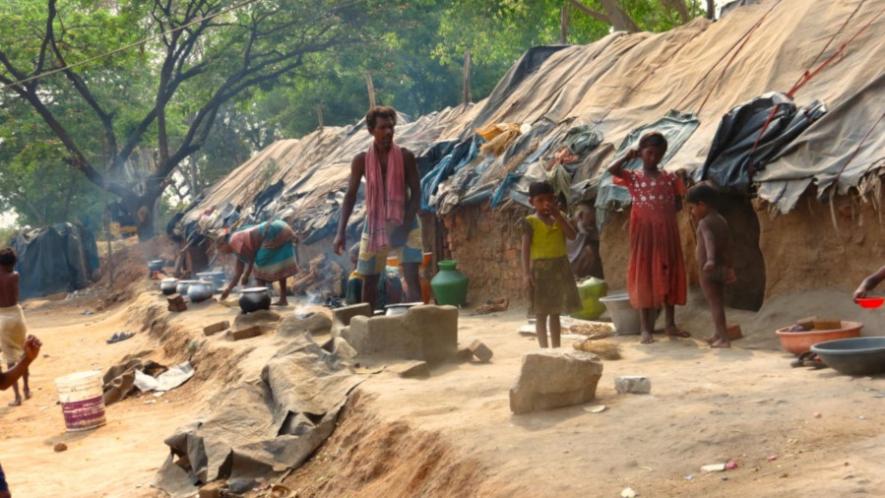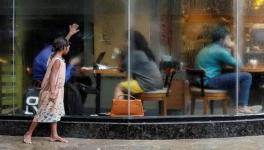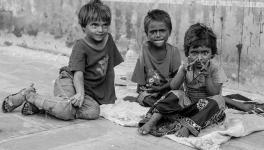Agnipariksha for the Poor in India

Representational image. | Image Courtesy: Wikimedia Commons
Lakhs of people would have to starve in India in the third week of lockdown if the required government support does not reach in time. A lot of voluntary organisations and government institutions are trying their level best to serve food and food items to the vulnerable sections of the society in different parts of the country. But, we do not have a clear picture about the outreach to the most vulnerable pockets of India because of the ongoing lockdown. However, from the available aggregate level secondary data, it is possible to imagine the situation, to some extent, for the purpose of policy formulation.
The government did not release the unit-level data of the National Sample Survey Organisation (NSSO) consumption expenditure survey of 2017-18. Therefore, the latest data on class-wise consumption expenditure of Indian households is available for the year 2011-12.
If we consider the rural inflation rate in consumer price index (CPI) of agricultural labourers and the urban inflation rate in the CPI for industrial workers (IW), we can convert the consumption expenditures numbers of 2011-12 into 2018-19 prices.
According to this data, the average monthly per capita consumption expenditure for the bottom 5% of rural population in India is Rs. 687 and that for urban India is Rs.920. As far as the next 5% population from the bottom is concerned, the monthly per capita average consumption expenditures are just Rs.868 and Rs.1,186 for rural and urban areas, respectively, in 2018-19 prices (see the table below).
Monthly Per-Capita Average Expenditure (UPR) on Different Items (In 2018-19 Prices)
Source: Calculated from Table nos. 4.1a-R & 4.1a-U, NSS 68th Round Survey Report on Key Indicators on Household Consumer Expenditure in India (2011-12), NSSO, MoSPI, GoI, June 2013.
If we look at this bottom 10% population in India, we see that they spend 60% of their total consumption expenditure on food items and less than 40% on all other items, including clothing, shelter, education, health, fuel and light etc. Within the total expenditure on food, the rural poorest 10% people spend more than 35% on cereals alone. This ratio is around 30% for the bottom 10% urban population. Apart from cereals, the other major food items in the consumption basket of this class of population comprises vegetables, beverages, edible oil, pulses, milk and milk products and spices etc. And 30-40% of non-food expenditure is incurred on fuel and lights.
If we divide these monthly numbers by 30, to arrive at the daily consumption expenditure in 2018-19 prices, we see that the rural bottom 5% people spend only Rs.23 per head per day on an average. These figures are Rs.31 for the urban bottom 5%, Rs.29 for rural bottom 5-10% and Rs.40 for the urban bottom 5-10% population in India. The average daily per-capita expenditure on food is Rs.14, 18, 18 and 23 for the rural bottom 5% and 5-10%, and urban bottom 5% and 5-10%, respectively. It is quite obvious that the amount of food that they get within Rs.18 or Rs.23 (in rural and urban areas) a day, does not provide them enough nutrition and immunity.
Understandably, these people do not have enough savings and have already lost their income in the past two weeks because of the lockdown. The size of this population is 13 crore or 130 million, assuming the total population of 130 crore in our country.
According to NSSO 2011-12 estimates, 40% of this population resides in urban areas and 60% of them in rural India. Even if just 1% of this extremely vulnerable section of the population starve, it means more than 13 lakh people. This is the seriousness of the situation.
As compared to that, as of now, the total number of coronavirus or COVID-19 cases in India is less than 6,000 and the death toll under 200. Given the crude death rate of 7.2 per 1,000 population and a total population of 130 crore, around 7 lakh 80 thousand people die in India every month, on an average. So, the cost of extending the lockdown beyond three weeks seems to be much higher than the benefits.
The condition of mental health of the poor and vulnerable is quite understandable under this extreme uncertainty. Their income sources have been clogged and it is not sure for how long. If government relief does not reach them immediately, they would be left with only two options – indulging in anti-social activities or death. The law and order situation could get out of control. Also, starvation deaths may look like cases of suicides. Therefore, the need of the hour is for the government to reach out to each and every corner of this vast sub-continent in a planned and coordinated manner. Let us not compel the poor of this country to pass through another ‘agnipariksha’ (acid-test).
The writer is assistant professor, Centre for Economic Studies and Planning, Jawaharlal Nehru University, Delhi. The views are personal.
Get the latest reports & analysis with people's perspective on Protests, movements & deep analytical videos, discussions of the current affairs in your Telegram app. Subscribe to NewsClick's Telegram channel & get Real-Time updates on stories, as they get published on our website.
























